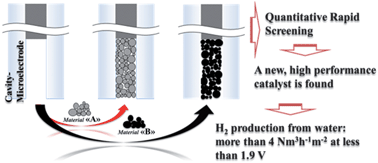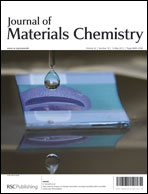In this paper, we introduce the concept and the methodology of quantitative rapid screening (QRS) of catalysts. It is based on the use of the cavity-microelectrode (C-ME), a tool that hosts a known amount of powder and can be filled and emptied quickly, thus allowing the quantitative, rapid, fine characterization of different materials. Here, C-MEs are used for selecting a suitable material to be used as electrocatalyst for the oxygen evolution reaction (water oxidation) in acidic environment, a key process for the majority of the industrial electrolytic applications including the production of high purity hydrogen. A matrix of materials, each having the same low iridium oxide content, is quantitatively screened for finding the most promising one. C-MEs allowed us to measure the effective number of active Ir sites and their surface concentration. The success of this strategy is proven by the good performance of the “best” material when tested in a proton exchange membrane water electrolyzer, that allowed high hydrogen fluxes at a low cell potential (∼4000 dm3 h−1 m−2 at less than 1.9 V).

You have access to this article
 Please wait while we load your content...
Something went wrong. Try again?
Please wait while we load your content...
Something went wrong. Try again?


 Please wait while we load your content...
Please wait while we load your content...